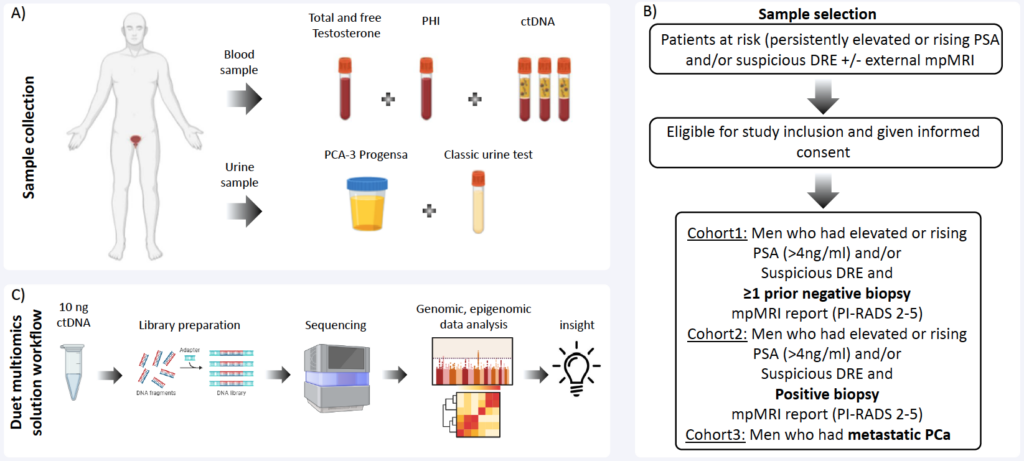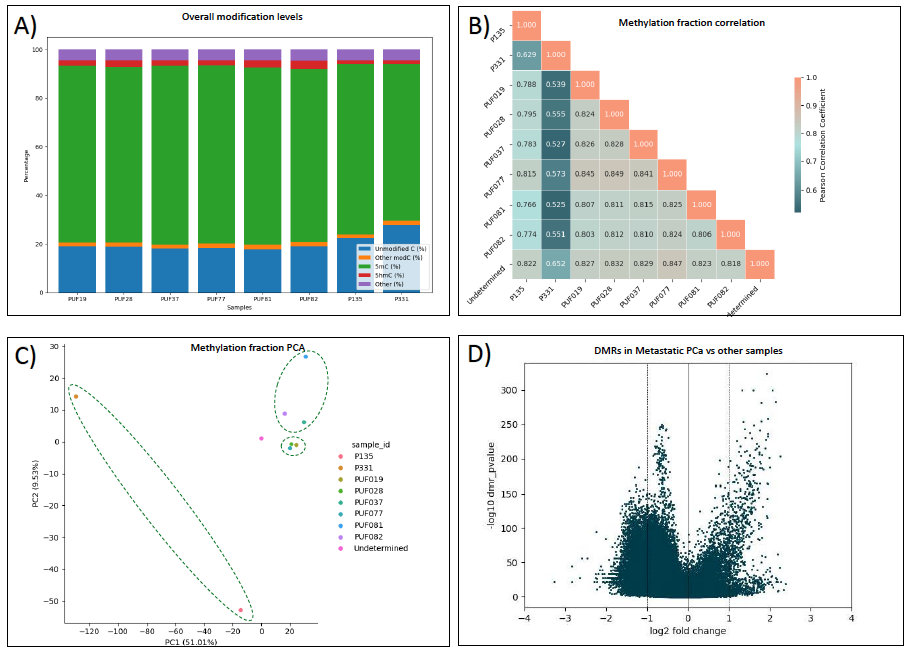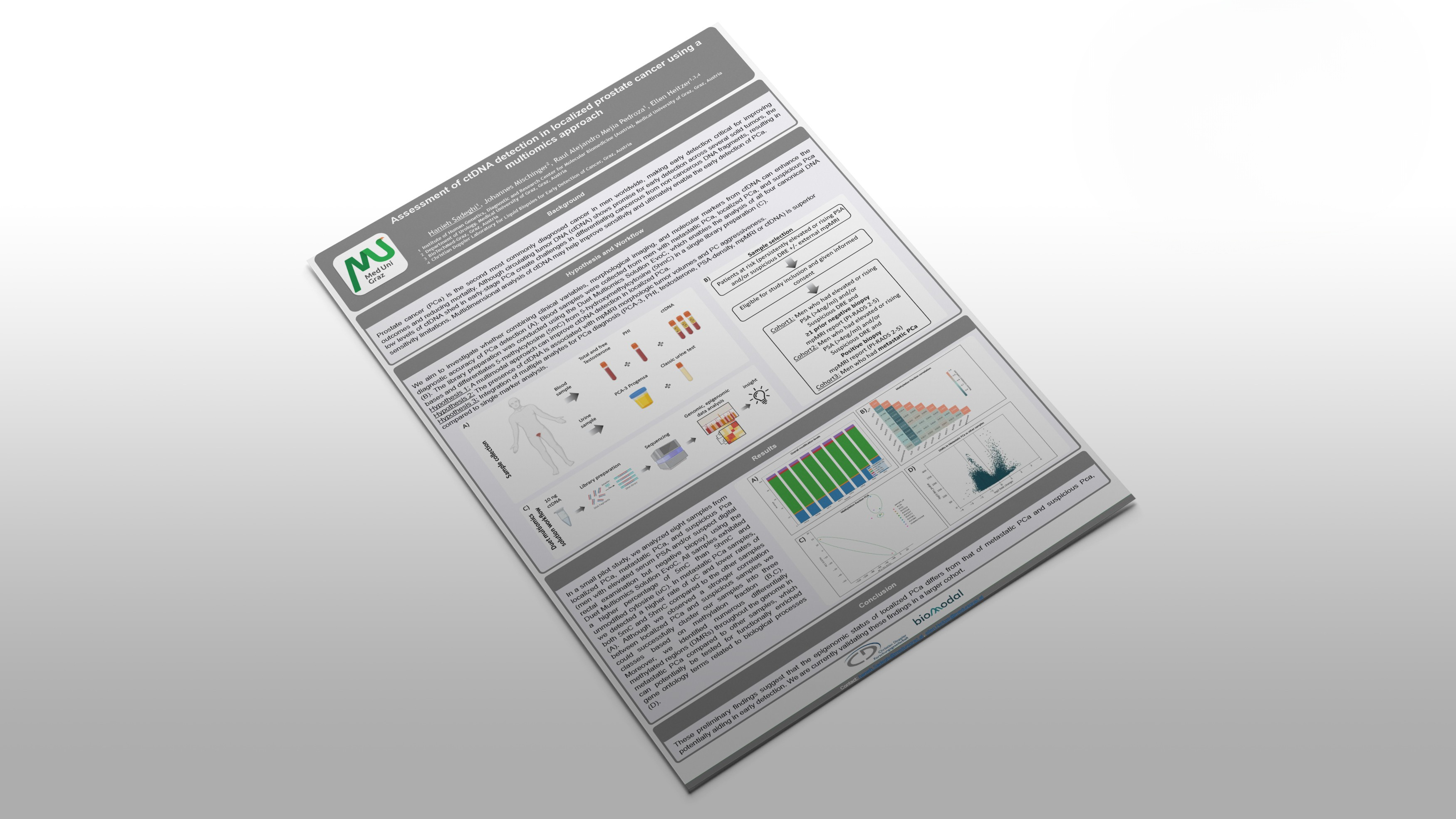
- Hanieh Sadeghi1
- Johannes Mischinger2
- Raul Alejandro Mejia Pedroza1
- Ellen Heitzer1,3,4
- Institute of Human Genetics, Diagnostic and Research Center for Molecular Biomedicine (Austria), Medical University of Graz, Graz, Austria
- Department of Urology, Medical University of Graz, Graz, Austria
- BioTechMed-Graz, Graz, Austria
- Christian Doppler Laboratory for Liquid Biopsies for Early Detection of Cancer, Graz, Austria
Prostate cancer(PCa) is the second most commonly diagnosed cancer in men worldwide, making early detection critical for improving outcomes and reducing mortality. Although circulating tumor DNA (ctDNA) shows promise for early detection across several solid tumors, the low levels of ctDNA shed in early-stage PCa create challenges in differentiating cancerous from non-cancerous DNA fragments, resulting in sensitivity limitations. Multidimensional analysis of ctDNA may help improve sensitivity and ultimately enable the early detection of PCa.
We aim to investigate whether combining clinical variables, morphological imaging, and molecular markers from cfDNA can enhance the diagnostic accuracy of PCa detection (A). Blood samples were collected from men with metastatic PCa, localized PCa, and suspicious Pca (B). The library preparation was conducted using the Duet Multiomics Solution EvoC, which enables the analysis of all four canonical DNA bases and differentiates
5-methylcytosine (5mC) from 5-hydroxymethylcytosine (5hmC) in a single library preparation (C).
Hypothesis 1: A multimodal approach can improve ctDNA detection in localized PCa.
Hypothesis 2: The presence of ctDNA is associated with mpMRI morphologic tumor volumes and PC aggressiveness.
Hypothesis 3: Integration of multiple analytes for PCa diagnosis (PCA-3, PHI, testosterone, PSA-density, mpMRI or ctDNA) is superior compared to single-marker analysis.

In a small pilot study, we analyzed eight samples from localized PCa, metastatic PCa, and suspicious Pca (men with elevated serum PSA and/or suspect digital rectal examination but negative biopsy) using the Duet Multiomics Solution EvoC. All samples exhibited a higher percentage of 5mC than 5hmC and unmodified cytosine (uC). In metastatic PCa samples, we detected a higher rate of uC and lower rates of both 5mC and 5hmC compared to the other samples.
(A). Although we observed a stronger correlation between localized PCa and suspicious samples we could successfully cluster our samples into three classes based on methylation fraction (B, C). Moreover, we identified numerous differentially methylated regions (DMRs) throughout the genome in metastatic PCa compared to other samples, which can potentially be tested for functionally enriched gene ontology terms related to biological processes (D).






